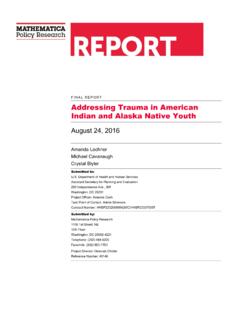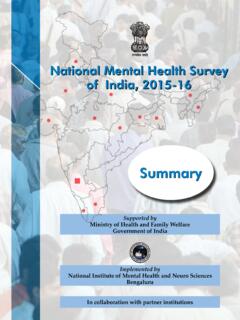Transcription of Fibre to Fabric P - NCERT
1 18 SCIENCE3 Fibre to FabricFig. A cloth Enlarged viewof a piece of fabricPaheli and Boojho won the firstprize in a Science Quizcompetition held at their were very excited and decided touse the prize money to buy clothes fortheir parents. When they saw a largevariety of cloth material, they gotconfused (Fig. ). The shopkeeperexplained that some clothes or fabricswere cotton and some were also had woollen mufflers andshawls. There were many silk sarees aswell. Paheli and Boojho felt very touched and felt these differentfabrics.
2 Finally, they bought a woollenmuffler and a cotton their visit to the cloth shop,Paheli and Boojho began to noticevarious fabrics in their found that bed sheets, blankets,curtains, tablecloths, towels anddusters were made from different kindsof fabrics. Even their school bags andthe gunny bags were made fromsome kind of Fabric . They tried toidentify these fabrics as cotton, wool,silk or synthetic. Can you also identifysome fabrics? VARIETY IN FABRICSA ctivity 1 Visit a nearby tailoring cuttings offabrics leftover afterstitching.
3 Feel andtouch each pieceof Fabric . Now,try to label someof the fabrics ascotton, silk, woolor synthetic afterasking for help from the you wonder what these differentfabrics are made of? When you look atany Fabric , it seems a continuous , look at it closely. What do younotice (Fig. )?Activity 2 Select a piece of cotton Fabric youlabelled in Activity 1. Now, try to find aloose thread or yarn at one of the edgesand pull it out (Fig. ). If no loose2021 2219 Fibre TO FABRICFig.
4 Pulling a thread from a Splitting the yarn into thin strandsFig. Yarn split up into thin strandsyarns are visible, you can gently pullone out with a pin or a find that a Fabric is made up ofyarns arranged together. What are theseyarns made of? FIBREA ctivity 3 Take out a yarn from a piece of cottonfabric. Place this piece of yarn on thetable. Now, press one end of the yarnwith your thumb. Scratch the other endof the yarn along its length with yournail as shown in Fig. Do you findthat at this end, the yarn splits up intothin strands (Fig.)
5 ?You might have observed somethingsimilar when you try to thread aneedle. Many a time, the end of thethread is separated into a few thinstrands. This makes it difficult to passthe thread through the eye of theneedle. The thin strands of thread thatwe see, are made up of still thinnerstrands called are made up of yarns andyarns are further made up of do these fibres come from?The fibres of some fabrics such ascotton, jute, silk and wool are obtainedfrom plants and animals.
6 These arecalled natural fibres. Cotton and juteare examples of fibres obtained fromplants. Wool and silk fibres are obtainedfrom animals. Wool is obtained from thefleece of sheep or goat. It is also obtainedfrom the hair of rabbits, yak andcamels. Silk Fibre is drawn from thecocoon of thousands of years natural fibreswere the only ones available for makingfabrics. In the last hundred years or so,fibres are also made from chemicalBoojho has seen in themuseums, items like theone shown here.
7 Thesewere worn by warriors. Hewants to know if theseare made of somekinds of 2220 SCIENCE substances, which are not obtainedfrom plant or animal sources. These arecalled synthetic fibres. Some examplesof synthetic fibres are polyester, nylonand SOME PLANT FIBRESC ottonHave you ever made wicks for oil lamps?What do you use for making thesewicks? This cotton wool is also used forfilling mattresses, quilts or some cotton wool, pull it apartand look at its edges. What do youobserve? The small, thin strands thatyou see are made up of cotton does this cotton wool comefrom?
8 It is grown in the fields. Cottonplants are usually grown at placeshaving black soil and warm climate. Canyou name some states of our countrywhere cotton is grown? The fruits of thecotton plant (cotton bolls) are about thesize of a lemon. After maturing, the bollsburst open and the seeds covered withcotton fibres can be seen. have you everJuteJute Fibre is obtained from the stem ofthe jute plant (Fig ). It is cultivatedduring the rainy season. In India, jute ismainly grown inWest Bengal, Biharand Assam.
9 Thejute plant isnormally harvestedwhen it is atflowering stems of theharvested plantsare immersed inwater for a fewdays. The stems rotand fibres areseparated by Field of cotton plantsFig. Ginning of cottonseen a cotton field that is ready forpicking? It looks like a field covered withsnow ( ).From these bolls, cotton is usuallypicked by hand. Fibres are thenseparated from the seeds by process is called ginning of was traditionally done by hand( ). These days, machines are alsoused for A jute plant2021 2221 Fibre TO FABRICFig.
10 TakliFig. CharkhaTo make fabrics, all these fibres arefirst converted into yarns. How isit done? SPINNING COTTON YARNYou can try making cotton yarn 4 Hold some cotton wool in one some cotton between thethumb and forefinger of the other , gently start pulling out the cotton,while continuously twisting the fibres(Fig. ). Are you able tomake a yarn?The process of making yarnfrom fibres is called this process, fibres from amass of cotton wool are drawnout and twisted. This bringsthe fibres together to forma simple device usedfor spinning is a handspindle, also called takli(Fig.)

















